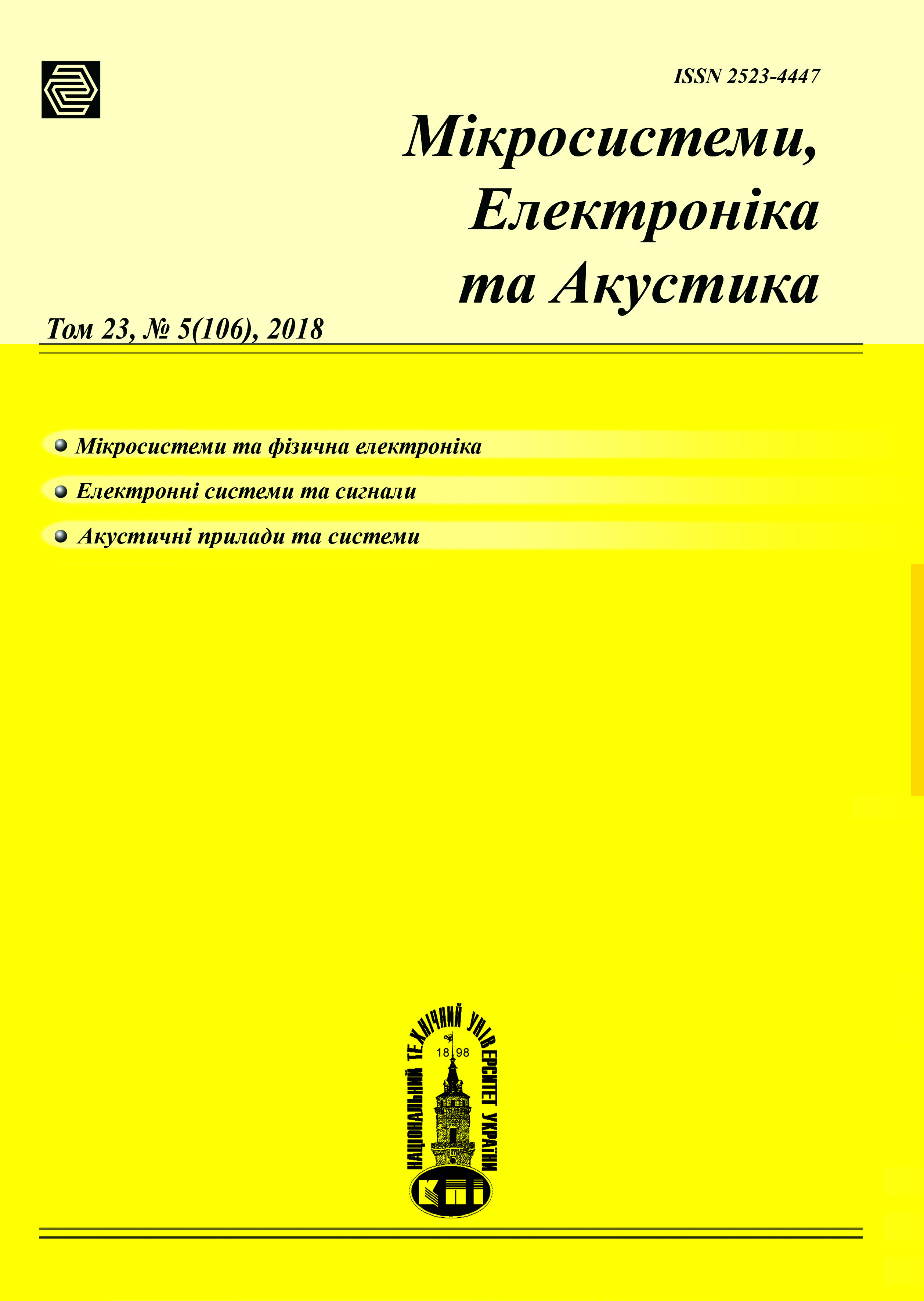Range of Detection of Small Air Objects by the Grounding Noise Receivers System
Main Article Content
Abstract
The paper considers the problem of detecting small air objects by a ground-based noise-tracking system with the concomitant definition of the detection range in conditions to the real noise-signal situation. As the receiving system, a group of receivers is chosen as well as -devices, which is designed as a linear discrete equidistant acoustic antenna. A small air object is represented by a "Drone with a screw-ring propulsor in a push arrangement".
For calculations was attracted the data about the loss to the expansion of the of acoustic waves front, data on spatial attenuation, on the influence of climatic factors and green plantations, as well as on the features of the "c- profile" and the terrain.
The emergence of a significant interest in the use of acoustic means for detecting, positioning and detecting elements of small airspace movement has led to the development of directions for the creation of mobile noise reduction devices that implement the principles of detecting sources of specific noise for conventional hydroacoustics. Such objects can include unmanned flying vehicles of various purposes - helicopter ("rotor") or airplane type ("wing"). The solution to this problem should be based on accurate information about the acoustic field of the source of specific noise and on the modes of motion of the object. Unfortunately, the information about the noise characteristics of airspace is extremely limited, but the widely available sources of information are mainly focused not on the advertising side of this issue. In this regard, the proposed material will be timely and timely, and the solution to the problem of detecting these objects with the associated definition of the predicted range of noise detectors in the conditions of a given model of spatial noise load - represents the purpose of the work. It is proposed to identify small wing objects of airborne objects at altitudes and at speeds that correspond to their technical characteristics in normal refraction. The probability of false alarms using the Neumann-Pearson criteria should be no more than 0.01. Survey Sector - selected according to the directional characteristics of the receiving system with the possibility of mechanical scanning in the sector. The operating frequency band of the receiving system is formed, based on the frequency characteristics of noise and the range of working speeds of airspace. It is proposed to determine the sloping "predicted" range taking into account the "energy" and "geometric" range. Before calculations, losses data on the expansion of the front of the acoustic waves, the data on the spatial decay, the influence of climatic factors and green plantations, as well as features of the "profile" and features of the terrain, in the form of "engineering structures" should be drawn.
Ref. 14, fig. 2, tabl. 1.
Article Details

This work is licensed under a Creative Commons Attribution 4.0 International License.
Authors who publish with this journal agree to the following terms:- Authors retain copyright and grant the journal right of first publication with the work simultaneously licensed under a Creative Commons Attribution License that allows others to share the work with an acknowledgement of the work's authorship and initial publication in this journal.
- Authors are able to enter into separate, additional contractual arrangements for the non-exclusive distribution of the journal's published version of the work (e.g., post it to an institutional repository or publish it in a book), with an acknowledgement of its initial publication in this journal.
- Authors are permitted and encouraged to post their work online (e.g., in institutional repositories or on their website) prior to and during the submission process, as it can lead to productive exchanges, as well as earlier and greater citation of published work (See The Effect of Open Access).
References
G. K. Baydauletova, D. Z. Bastaubaeva, and M. Aukenova, “Primenenie bespilotnyih letayuschih apparatov [The use of unmanned aerial vehicles],” Kaz. Natsionalnyiy Univ., pp. 98–101, 2014, URL: http://pps.kaznu.kz/kz/Main/FileShow2/11472/94/124/7693/БастаубаеваДженискульЖумахановна/2015/2.
I. Y. Biryukov, M. Y. Busyak, and O. B. Anipko, “Zvukovyie portretyi ob’ektov bronetehniki dlya obnaruzheniya i raspoznaniya tseley [Sound portraits of armored vehicles for detection and recognition of targets],” Integrovani Tehnol. ta energozberezhennya., vol. 3, pp. 31–36, 2011, URL: http://repository.kpi.kharkov.ua/handle/KhPI-Press/2108.
O. V. Soloviev, “Eksperimentalni doslidzhennya rivnya shumu BPLA “STRELA-M" [Experimental studies of noise levels of UAV ‘STREPET-M,’” Zb. Nauk. Pr. HUPS, vol. 2(24), pp. 36–39, 2010, URL: http://nbuv.gov.ua/UJRN/ZKhUPS_2010_2_10.
S. P. Ostroukhov, P. A. Moshkov, and V. F. Samokhin, “Eksperimentalnoe issledovanie istochnikov shumnosti bespilotnogo letatelnogo apparata s vinto-koltsevyim dvizhitelem v tolkayuschey komponovke [Experimental study of noise sources of an unmanned aerial vehicle with a screw-ring propulsor in a pushing arra,” El.Zhurnal “Trudyi MAI,” vol. 70, pp. 1–24, 2013, URL: http://trudymai.ru/upload/iblock/81d/81d77168791775d9fa57060f4d4612d5.pdf.
Y. Y. Dobrovolskyi and M. D. Smaryishev, Gidroakusticheskie antennyi. Spravochnik po raschetu napravlennyih svoystv gidroakusticheskih anten [Hydroacoustic antennas. Handbook for the calculation of directional properties of hydroacoustic antennas]. Leningrad: Sudostroenie, 1984.
H. A. Myullera and M. Hekla, Spravochnik po tehnicheskoy akustike [Handbook of Technical Acoustics]. Leningrad: Sudostroenie, 1980, URL: http://artlib.osu.ru/web/books/content_all/3374.pdf.
B. I. Shotskyi, Metodicheskie ukazaniya k kursovomu proektirovaniyu po distsipline “Gidroakusticheskie ustroystva” Chast 1 [Methodical instructions to the course design on the discipline “Hydroacoustic devices”. Part 1]. KPI, 1986.
Jens Trampe Broch, Primenenie izmeritelnyih sistem firmyi “Bryul i K’er” dlya izmereniy akusticheskogo shuma [Application of measuring sistems Brüel & Kjaer measurement of acoustic noise]. Kopengagen: Larsen i syin, 1971.
V. S. Didkovskyi, Osnovi akustichnoyi ekologiyi: Navchalnyi posibnik [Fundamentals of Acoustic Ecology: Textbook]. Kirovograd: PVTs TOV Imeks LTD, 2002, ISBN: 9667822133.
O. V. Korzhyk, O. H. Leiko, and V. S. DIdkovskyi, Shumi i vibratsiyi [Noises and vibrations: Textbook]. Kyiv: TOV Imeks-LTD, 2010.





